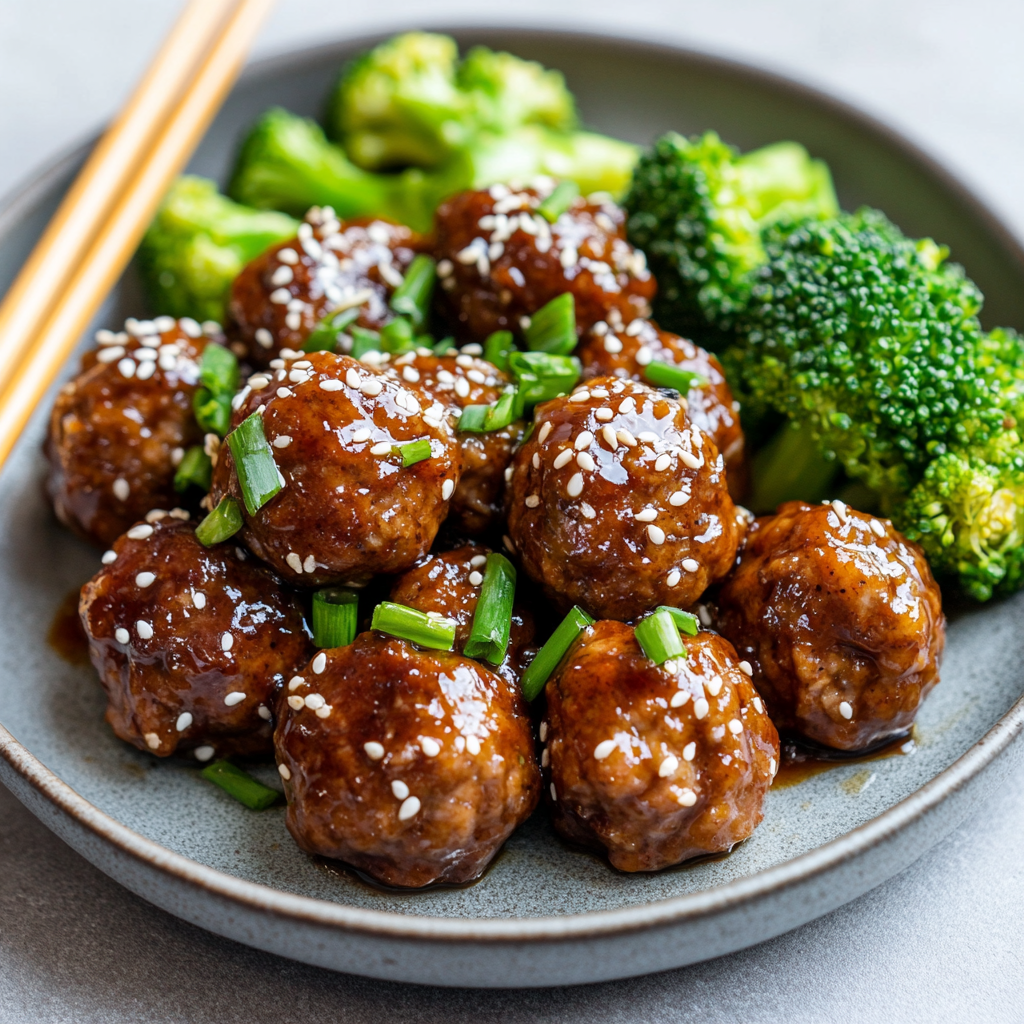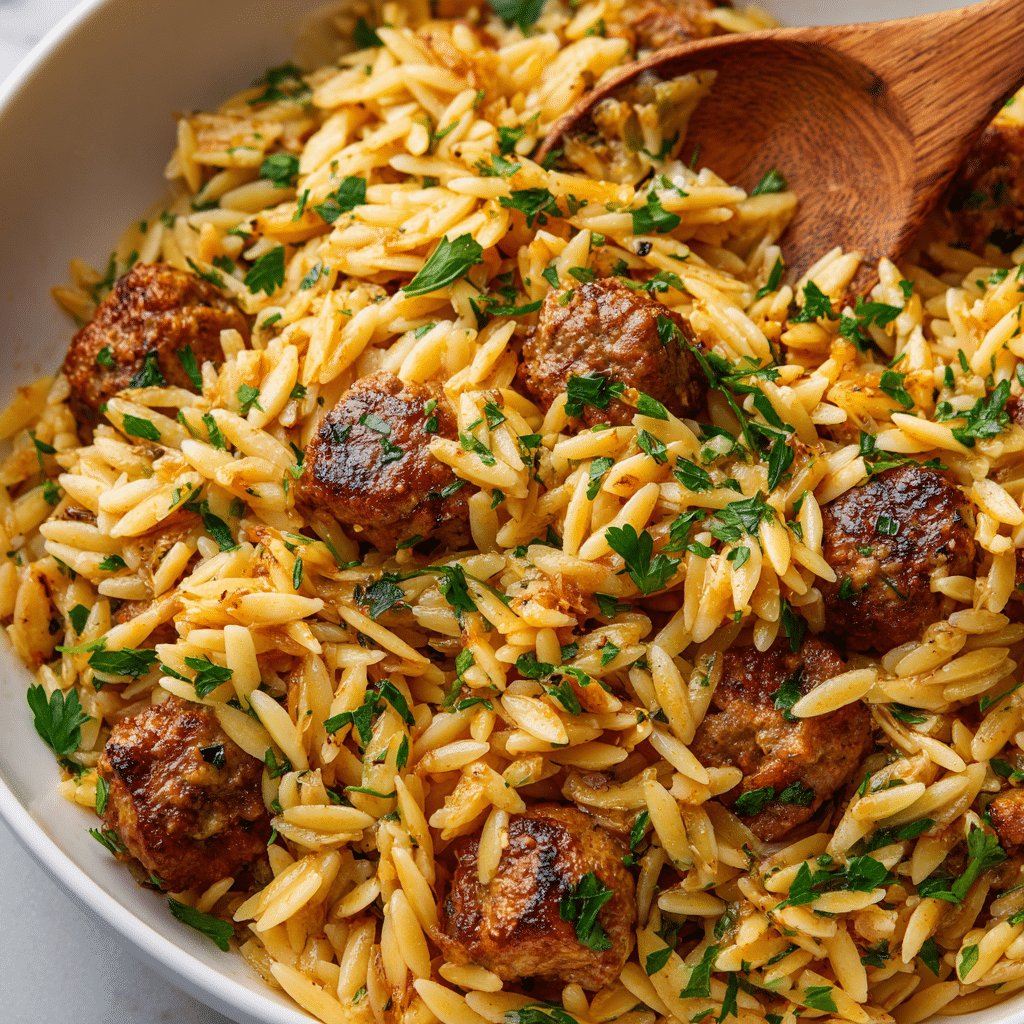If you love rich, sweet-and-savory flavors and crave something a little more exciting than traditional meatballs, this Mongolian meatballs recipe is calling your name. Inspired by the bold profile of Mongolian beef—a Chinese-American takeout classic—these meatballs are coated in a thick, garlicky soy-based sauce that caramelizes beautifully and clings to every bite.
This dish combines comfort with flavor, making it perfect for cold evenings, casual gatherings, or even as a creative appetizer. Best of all, the recipe is simple to prepare and incredibly satisfying.
Ingredients
For the Meatballs:
-
500g (1.1 lb) ground beef (or beef and pork mix)
-
1 egg
-
½ cup breadcrumbs
-
2 green onions, finely chopped
-
1 clove garlic, minced
-
1 tsp soy sauce
-
½ tsp ground ginger
-
¼ tsp black pepper
-
1 tbsp sesame oil or vegetable oil (for frying)
For the Mongolian Sauce:
-
½ cup low-sodium soy sauce
-
¼ cup brown sugar
-
1 tbsp hoisin sauce
-
2 tsp cornstarch
-
2/3 cup water
-
1 tbsp rice vinegar
-
2 cloves garlic, minced
-
1 tsp grated fresh ginger
-
Optional: red chili flakes for spice
How to Make Mongolian Meatballs
Start by mixing the meatball ingredients in a large bowl: ground beef, breadcrumbs, egg, garlic, green onions, soy sauce, pepper, and ground ginger. Gently mix with your hands or a spoon until just combined—overmixing will result in dense meatballs.
Shape the mixture into 1.5-inch balls and set them on a tray. You should get about 16 to 20 meatballs.
In a large skillet, heat sesame oil over medium heat. Add the meatballs in batches and brown them on all sides. This should take about 8–10 minutes. Once cooked through or browned on the outside, remove and set aside on a plate lined with paper towels.
Making the Mongolian Sauce
In the same skillet, remove any excess fat, then add the minced garlic and ginger. Sauté for 1–2 minutes until fragrant but not burned.
In a bowl, whisk together the soy sauce, brown sugar, hoisin sauce, vinegar, and water. Dissolve the cornstarch in a small amount of cold water and stir into the sauce mixture. Pour everything into the skillet with the garlic and ginger.
Let the sauce simmer over medium heat for 3–5 minutes, stirring frequently, until it thickens into a glossy glaze.
Return the meatballs to the skillet and toss them gently in the sauce. Simmer for another 5–7 minutes, letting them soak in the flavor and caramelize slightly.
How to Serve Mongolian Meatballs
These meatballs are incredibly versatile. Here are several serving suggestions:
-
Over steamed white rice or jasmine rice with green onions and sesame seeds on top.
-
With stir-fried vegetables like broccoli, snap peas, bell peppers, or bok choy.
-
In lettuce cups for a light, low-carb option.
-
With rice noodles for an Asian-style noodle bowl.
-
On a party platter with toothpicks and extra sauce on the side.
This recipe is perfect for casual dinners, lunch meal prep, or appetizers at a gathering.
Adjusting Flavor and Spice
Mongolian-style sauce is known for its rich balance of sweet and salty. If you like your sauce less sweet, reduce the brown sugar to 2 tablespoons. For extra heat, add red chili flakes, sriracha, or diced red chili while cooking the sauce.
If you prefer a stronger tang, a splash of lime juice or more vinegar can balance out the sweetness.
You can also enhance the umami flavor by adding a splash of oyster sauce or a teaspoon of miso paste.
Making It Gluten-Free
To adapt this Mongolian meatballs recipe for a gluten-free diet:
-
Use gluten-free breadcrumbs or almond flour as a binder.
-
Replace soy sauce with tamari or coconut aminos.
-
Check that your hoisin sauce and rice vinegar are certified gluten-free.
These substitutions ensure the same bold flavor without any gluten exposure.
Tips for Meal Prep and Storage
These meatballs store very well and are great for weekly meal prep:
-
In the fridge: Store cooked meatballs with sauce in an airtight container for up to 4 days.
-
In the freezer: Freeze cooked meatballs (with or without sauce) for up to 3 months. Thaw in the fridge overnight before reheating.
-
To reheat: Warm on the stove over low heat with a splash of water to loosen the sauce, or microwave in a covered dish.
You can also freeze uncooked meatballs and cook them fresh as needed.
Nutrition Highlights
Using lean ground beef or a mix of beef and turkey helps reduce fat while keeping the flavor rich. Garlic and ginger provide natural anti-inflammatory benefits, and soy-based sauces are rich in savory umami notes that satisfy deeply.
Pairing with rice and vegetables turns these meatballs into a balanced, high-protein meal that works well in many dietary plans.
Party-Ready Mongolian Meatballs
This recipe is also ideal for serving at events and holiday gatherings. Simply shape the meatballs smaller for bite-sized portions, cook as usual, and keep them warm in a slow cooker on the buffet table.
Offer small forks or toothpicks and garnish with chopped green onions and sesame seeds for a beautiful presentation. They’re guaranteed to disappear quickly—so make extra!
Fusion Ideas
Once you’ve mastered the base recipe, you can easily explore global flavor mashups:
-
Add crushed pineapple to the sauce for a Hawaiian-style version.
-
Use lamb or pork instead of beef for a different depth.
-
Serve over mashed potatoes or polenta for a surprising East-meets-West twist.
-
Wrap in bao buns with cucumber and pickled onions for a Mongolian-style slider.
These variations keep the dish exciting and allow you to cater to different guests and occasions.
Flavor Pairing and Beverage Ideas
To complete your Mongolian meatballs meal, the right beverage can enhance the experience. A crisp Asian lager or a cold sparkling water with lemon pairs well with the sweetness of the sauce. If you prefer wine, try a slightly chilled Pinot Noir or a dry Riesling, both of which complement the umami and ginger tones.
For non-alcoholic options, serve with iced green tea or a light cucumber-mint infused water to balance the richness of the dish.
Nutritional Adjustments
If you’re looking to reduce sugar, substitute brown sugar with coconut sugar or a low-glycemic sweetener like monk fruit. To boost the fiber content, serve over brown rice or quinoa instead of white rice. You can also mix ground beef with lentils or grated vegetables to increase nutrients while reducing fat and calories.
If you’re on a keto or low-carb diet, skip the breadcrumbs and replace them with almond flour, then serve the meatballs with sautéed greens or cauliflower rice.
Cooking for Kids
Mongolian meatballs are a hit with kids due to their sweet flavor and glossy appearance. To make them more family-friendly:
-
Reduce or omit chili if your child is spice-sensitive.
-
Serve with plain noodles or white rice.
-
Offer toothpicks and let kids dip the meatballs into extra sauce like a fun snack.
-
Include steamed broccoli or carrots for color and balance.
You can also form the meatballs smaller and use them in lunchboxes as a protein-rich, easy-to-eat item.
Cultural Inspiration
Though Mongolian meatballs are not traditional Mongolian fare, they take inspiration from the American-Chinese dish Mongolian beef, which itself evolved as a flavorful, restaurant-friendly take on Chinese stir-fry. The sweet-savory soy glaze, the bold garlic and ginger aroma, and the deep browning of the meat evoke Chinese cooking principles even in a fusion format.
This recipe celebrates how flavors travel and transform—melding East Asian ingredients with Western methods like meatball rolling and baking.
Final Thoughts
This Mongolian meatballs recipe brings together everything we love about comfort food: bold taste, ease of preparation, and crowd-pleasing results. Whether you’re serving it for dinner, meal prepping for the week, or cooking for guests, it delivers big flavor with minimal fuss.
It’s a reminder that great cooking doesn’t require complicated steps—just quality ingredients, a well-balanced sauce, and a little time in the kitchen.





